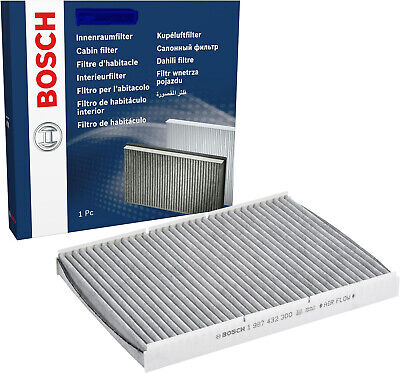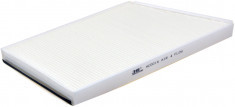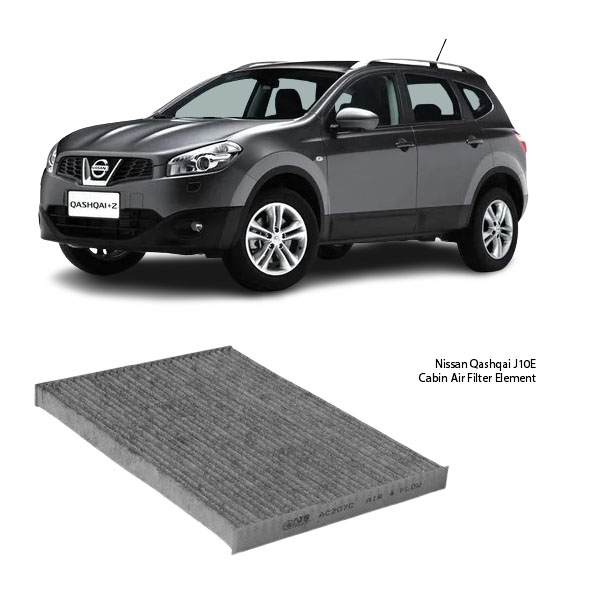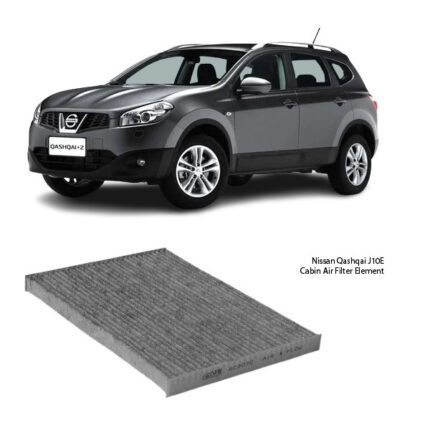Get Nissan Qashqai J10E Cabin Air Filter Element AC207C in Kenya
The Cabin Air Filter Element is a crucial yet often overlooked component of a vehicle’s HVAC (heating, ventilation, and air conditioning) system. Its primary function is to clean the air that enters the interior of the vehicle through the ventilation system, filtering out dust, pollen, smog, and other airborne contaminants to ensure a clean and breathable cabin environment.
What is a Cabin Air Filter?
A cabin air filter is typically a rectangular or square pleated filter made from paper, cotton, or synthetic material. It’s mounted behind the glove compartment, under the dashboard, or under the hood near the windshield. While its design may vary slightly from one vehicle make to another, its core function remains the same: to trap pollutants before they enter the passenger compartment.
Cabin air filters are distinct from engine air filters, which clean the air going into the engine. While the engine air filter protects the engine, the cabin filter protects you and your passengers.
Importance of a Good Cabin Air Filter
A high-quality cabin air filter does more than just keep dust away—it significantly enhances comfort, safety, and health. Here’s how:
-
Improved Air Quality: It filters harmful substances like pollen, mold spores, soot, bacteria, exhaust fumes, and airborne allergens. This is especially vital for passengers with allergies, asthma, or respiratory conditions.
-
Odor Reduction: Many advanced cabin filters come with activated charcoal layers to absorb unpleasant odors and harmful gases, keeping the interior fresh.
-
Protects HVAC System: A clean filter prevents debris from clogging the heating and cooling system, reducing wear and extending the life of HVAC components like the blower motor.
-
Visibility Safety: A clean filter helps maintain proper airflow, preventing fog buildup on windows and improving visibility during humid or cold conditions.
Advantages of Using a Good Cabin Air Filter
Investing in a high-quality cabin filter comes with multiple benefits:
-
Health Protection: Minimizes exposure to harmful particles, especially in urban or dusty environments.
-
Enhanced Comfort: Maintains cleaner, fresher air, which is particularly noticeable during long drives or in heavy traffic.
-
Longer HVAC Life: By keeping dirt and debris out of the system, a good filter can help your car’s ventilation system work more efficiently and last longer.
-
Quiet Operation: A clean filter reduces strain on the blower motor, resulting in quieter airflow and better overall HVAC performance.
-
Fuel Efficiency Boost: While minimal, reduced strain on the HVAC system can marginally improve energy usage in the car.
Disadvantages of a Bad or Worn-Out Cabin Air Filter
Failing to replace a clogged or poor-quality cabin filter can lead to several problems:
-
Reduced Airflow: Dirty filters restrict airflow into the cabin, making it harder to heat or cool the interior efficiently.
-
Foggy Windows: A blocked filter can reduce the system’s ability to defog windows, posing a safety risk.
-
Allergen Buildup: A neglected filter becomes a breeding ground for mold, bacteria, and other irritants, worsening the air quality inside your vehicle.
-
Strain on HVAC: The system has to work harder to push air through a clogged filter, which can lead to premature wear or failure of the blower motor.
-
Bad Odors: Accumulated contaminants can result in a musty smell each time you turn on the air conditioning or heater.
Signs of a Worn-Out Cabin Air Filter
Knowing when to replace your cabin air filter is crucial. Here are common signs that it’s time for a change:
-
Reduced Airflow: You notice weak airflow from vents even at high fan speeds.
-
Unpleasant Odors: A musty or moldy smell coming from the vents.
-
Increased Allergy Symptoms: Sneezing, coughing, or irritation during drives may indicate poor air quality.
-
Foggy Windows: Difficulty clearing fog from windows or faster fog buildup.
-
Noisy Blower Motor: The blower seems to work harder or makes unusual sounds, possibly due to airflow restriction.
-
Mileage: If it’s been over 15,000–30,000 km (or 12–24 months, depending on the vehicle and environment), a replacement is likely due even without symptoms.
How to Replace a Cabin Air Filter
Replacing the cabin air filter is usually a straightforward DIY task. Here’s a general step-by-step guide:
-
Locate the Filter: Most commonly, it’s behind the glove compartment. Consult your owner’s manual for the exact location.
-
Access the Filter Housing: You may need to remove the glove box or unclip the filter housing cover.
-
Remove the Old Filter: Take note of the airflow direction marked on the filter or housing.
-
Clean the Housing: Use a clean cloth or vacuum to remove debris from the housing area.
-
Insert the New Filter: Ensure it’s aligned with the airflow direction.
-
Reassemble Components: Replace the cover and glove compartment, if applicable.
Always make sure to use the right filter type specified for your vehicle.
Types of Cabin Air Filters
Cabin filters are available in several variations:
-
Particulate Filters: The most basic type, made of pleated paper or synthetic fiber. Filters out dust, pollen, and other solid particles.
-
Charcoal-Activated Filters: These include a layer of activated carbon to trap gases and odors. Ideal for urban driving and areas with high air pollution.
-
Electrostatic Filters: Designed to attract and trap microscopic particles using electrostatic charge.
-
HEPA Filters (High-Efficiency Particulate Air): The most advanced type, capable of filtering over 99% of particles as small as 0.3 microns. Often used in luxury or specialized vehicles.
Maintenance Tips
-
Stick to the Schedule: Replace every 15,000–30,000 km or once a year, depending on driving conditions.
-
Check After Dusty Drives: After long trips on dirt roads or in dry seasons, inspect the filter more frequently.
-
Use Quality Replacements: Opt for OE (Original Equipment) or reputable aftermarket brands for the best performance.
-
Pair with Interior Cleaning: For a healthier cabin, regularly vacuum and wipe down interior surfaces alongside changing the filter.
Follow us on Facebook for more parts.




